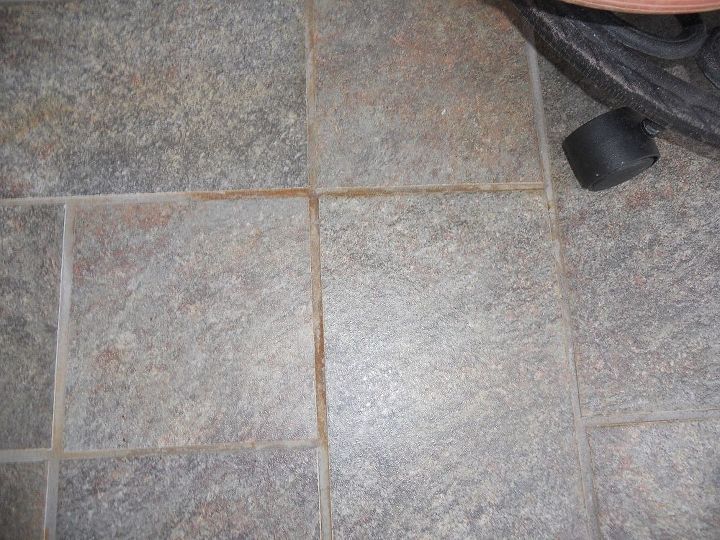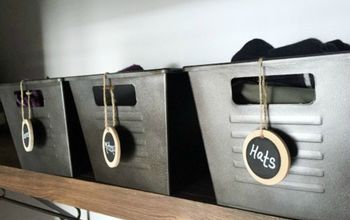How can I stop slate tile from flaking off the outside entrance patio?

We put slate on the front entrance patio. It looks nice, but it continually flakes off. Is there any thing that we can put on it to seal it to prevent the flaking? I like the look of slate, but I am concerned that it will have to be replaced. It was purchased as slate to be used outdoors.
Related Discussions
How to get rid of mice?
We seem to have some unwelcome Mickeys and Minnies in our house. What is the best way to get rid of them?
How to remove popcorn ceiling with asbestos?
I want to remove my popcorn ceiling, but it has asbestos in it. How do I go about this safely?
How to caulk baseboard gaps?
How do I fill gaps at baseboard, should I caulk? If so, does anyone know how to caulk baseboards?
How to fix squeaky hardwood floors?
How do I fix squeaky hardwood floors?
How do I remove chipping paint from an outside chimney?
Recently purchased a house and the chimney brick has been painted. The top portion of the chimney, just above the roof is unsightly, as the paint is chipping off and ... See more
How do I get rust off of tile and grout outside?
Last year I had indoor/outdoor tile put on my back padio - looks great. But afterwords I had the idea to add a roller metal pot so I could put my garden hose into. Th... See more





Are you in a freeze zone? You can't use slate out side if it gets wet and freezes. Go to where you got it to see what they recommend.
Was a sealer applied to it? Slate should not be sealed because certain weather conditions can cause that sealer product to flake. Also freezing and thawing in cold climates can cause natural stones to flake. I would go back to where you bought it and ask them a few questions.
That is a known characteristic of slate. It doesn't matter if it's for inside or outside, it will flake. Depending on how thick it is, the slate should last a while. When you had it installed, did they explain about slate and it's problem? If not, I'd call and have them come out, then ask them why you weren't told about it.
Slate it is a very fragile stone probably not the best to use in high traffic areas or where it has open edges. It's been freezing then thawing and since it's your entry getting salt/deicers etc. tracked in/on it building up. Here's article I found with more info. for you. A major mistake that is often made—even by some professionals—is to apply a sealer to the stone or tile before the sub-florescence is completely resolved. Applying a sealer prematurely will not solve the subflorescence and will actually block the escape of moisture, making things even worse.Flaking (also called spalling) in natural stone is generally an indicator of sub-florescence, a condition in which mineral salts are carried into the stone by moisture and accumulate beneath the stone’s surface, creating stress within the pores of the stone. This condition can be particularly damaging if the stone experiences freeze-thaw cycles, since the moisture and salts will freeze and expand, building up even more pressure within the stone.
If spalling progresses too far, the stone will wind up needing to be replaced, so it is best to address the problem as early as possible, by contacting a stone restoration expert to evaluate the stone. They can help determine the source of both the moisture and the salts and offer practical solutions specific to your situation to resolve the problem and help prevent its re-occurrence.
Salts can come from many sources. They may be inherent in the stone itself. They can come from the presence of de-icing salts or polluted rain water, from improper cleaning methods, from the setting bed, and even from the soil beneath the setting bed if the installation has not been properly insulated. Lab testing may be required to determine the source of the salts, which can also indicate the source of the moisture if it is not readily apparent.
Once the specifics are known, steps must then be taken to extract the salts from the stone, allow the stone to dry completely and then protect it from additional moisture. Dealing with sub-florescence is really not a DIY project and it may take some time to achieve complete resolution, so it is important to contact your stone restoration expert as soon as the condition is noticed. Be aware that efflorescence—a white haze or powdery residue on the surface of the stone —can be a precursor to sub-florescence, and an early warning sign. If you think your stone is showing signs of either condition, don’t hesitate to contact your stone restoration technician. Acting before the damage becomes severe can help you avoid having to replace rather than restore your stone.